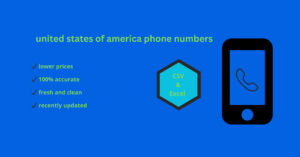llm agents are achieving massive adoption rates among companies: in customer service, internal operations and e-commerce. Companies that are slow to adopt them will suffer the consequences of missing out on the AI wave.
Botpress is an infinitely extensible AI agent platform united states of america phone numbers built for businesses. Our site stack allows developers to create llm agents with any capability you may need.

Our enhanced security suite ensures that customer data is always protected and fully controlled by your development team.
Start building today. It's free.
Or contact our sales team for more information.
Guide to multi-agent systems in 2024
What are multi-agent systems and what are they for?
Botpress
multi-agent systems" on blue and black background.
What is better than an AI agent?
In multi-agent systems, different AI agents with different tasks interact to achieve an overall goal.
There are many examples of AI agents in the real world that use multi-agent systems to function, such as smart grid controllers and warehouse systems.
Let's look at what multi-agent systems are, how they differ from single-agent systems, and what they can be used for.
Create AI agents
create custom autonomous agents
start now
no credit card needed
What is a multiagent system?
A multi-agent system (sam) contains multiple AI agents that collaborate in a shared environment to achieve specific goals.
These systems are typically designed to address tasks that are too large, complex, or decentralized to be handled by a single AI agent.
Each agent in a multi-agent system can act independently, perceiving and interpreting the environment, making decisions and undertaking actions to achieve its objective.
3 main characteristics of a multi-agent system
In his introduction to multiagent systems (2002), professor and researcher Michael Wooldridge describes 3 key characteristics of multiagent systems:
abstract blue blocks design.
Decentralization
In a multi-agent system, decentralization means that each agent operates independently, using local data and its own decision making without relying on a central controller.
In this way, AI agents can perform tasks individually while still contributing to the overall goals of the system through interaction.
Local views
Each agent has a local vision, but no agent has a global vision. This means that no agent has complete knowledge of the entire system, but only of the components relevant to its specific task.
Autonomy
Autonomy in a multi-agent system allows each agent to interpret information and act independently based on its own rules and objectives.
This independence means that agents can make decisions and adapt their actions without the need for other agents to guide them or continually provide information.
